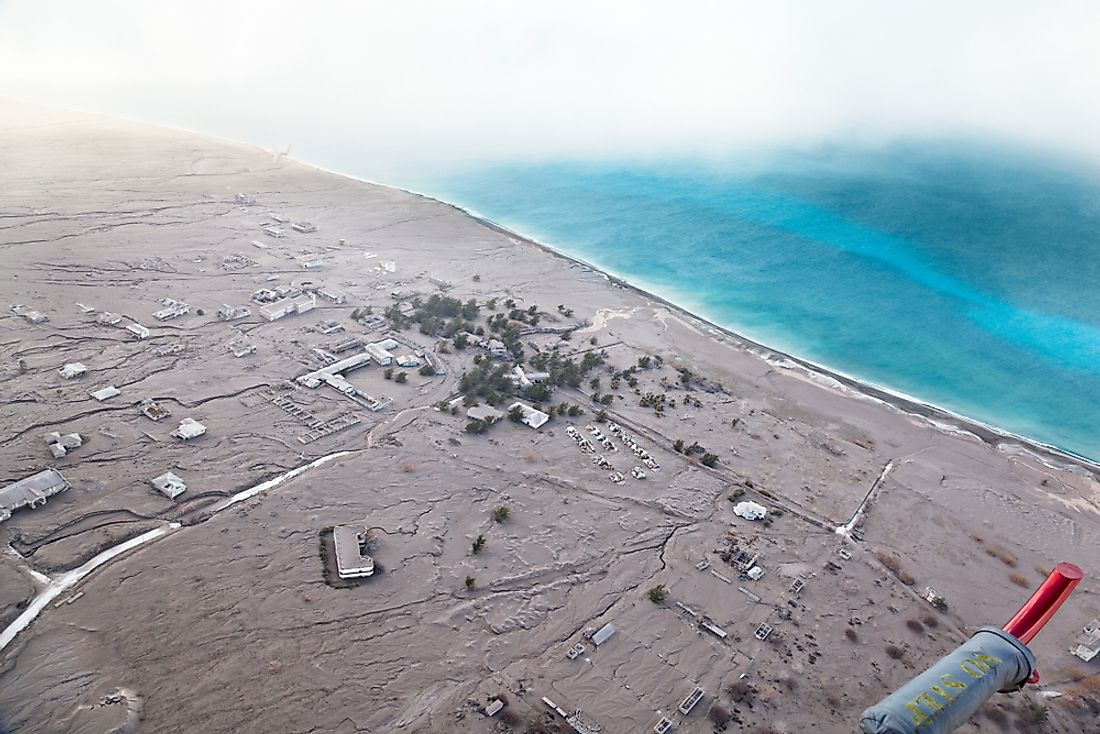The 1995 Soufrière Hills Eruption

In 1995, the Soufrière Hills volcano on the Caribbean island of Montserrat became active. As a result, half of Montserrat became uninhabitable. As the volcano had been dormant for over 3 centuries and had been deemed inactive, this came as a devastating blow to the small island and its inhabitants.
Location And Geography
The Soufriere Hills volcano is situated in the Caribbean Island of Montserrat. The Island is a British Overseas Territory and is a part of the Leeward Islands which is a chain of islands known as the Lower Antilles. The total land area is about 100 square kilometers. The Soufrière Hills Volcano is part of the Lesser Antilles Volcanic Arc and is situated to the south of the island. The capital city was called Plymouth before it was buried in debris after the eruption.
History And Timeline
The early history of the volcano is relatively unknown due to inconsistent record keeping. The first explosive eruption is estimated to have been around 2,500 years ago. The last known eruption was in the 16th century where anywhere between 25 to 65 million cubic meters of lava erupted at Castle Peak. The 1995 eruption was preceded by seismic activity recorded in 1897, 1933 and lastly in 1966. The eruption in 1995 was also preceded by seismic activity but what ensued was mostly unexpected. Earthquake swarms had first been detected in 1992 and again in 1994.
Eruption Of The Soufrière Hills Volcano
The eruption of ash in July 1995 prompted an evacuation of almost 5,000 residents. The volcano grew a new dome on November 1995. By January 1996, the old dome was rapidly buried and between March and September of the same year, the first pyroclastic flows poured down the Tar river valley. This created a new delta and in April the south of the island was evacuated. The capital city of Plymouth was also abandoned. Pyroclastic flows and eruption columns are the main features of this volcano. They occur when the dome collapses or explodes. Tonnes of hot rock, lava and ash explode from the crater in a cloud moving at speeds of up to 100 miles per hour with temperatures reaching over 400°C. The fast moving cloud annihilates and incinerates everything in its way.
Aftermath Of The Eruption
The eruption left the southern two-thirds of the islands completely inhabitable. Pyroclastic flows still pour down the slopes of the volcano. The eruptions continued after the volcano became active. The disaster resulted in the collapse of the tourism and also the local rice processing industries. Unemployment shot up from a manageable 7% to over 50%. Agricultural activities became nearly impossible and living conditions were further worsened by respiratory problems caused by the spewing ash. The aid and relief activities were spearheaded by both British and Montserrat governments.
Conclusion
The 1995 eruption changed the landscape and living conditions of the Montserrat Island completely. It destroyed the economy and forced most residents to abandon the city. As a result of this eruption, several monitoring initiatives were undertaken like the establishment of an extensive seismograph network. The volcano is still active and subject to eruptions from time to time. It remains to be seen how long it will take until the island is habitable again.











